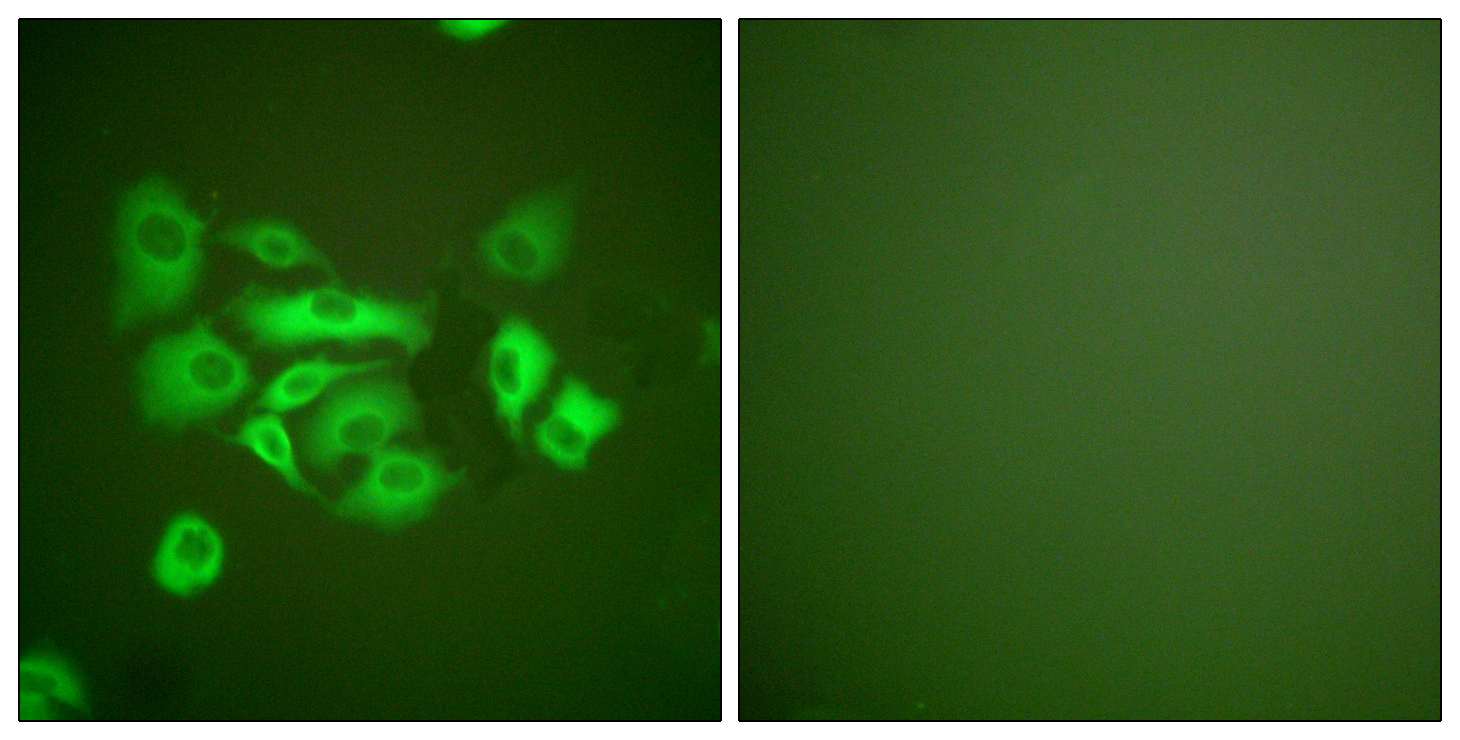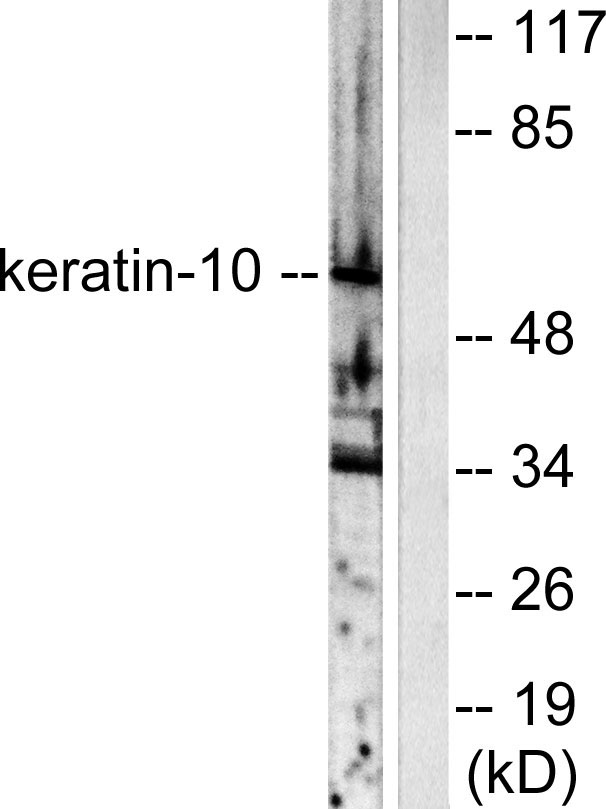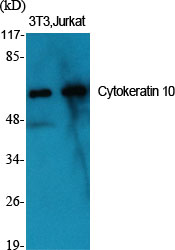产品名称
Cytokeratin 10 Rabbit Polyclonal Antibody
别名
KRT10; KPP; Keratin; type I cytoskeletal 10; Cytokeratin-10; CK-10; Keratin-10; K10
蛋白名称
Keratin type I cytoskeletal 10
存储缓冲液
Liquid in PBS containing 50% glycerol, 0.5% BSA and 0.02% New type preservative N.
Human Gene Link
http://www.ncbi.nlm.nih.gov/sites/entrez?db=gene&term=3858
Human Swissprot No.
P13645
Human Swissprot Link
http://www.uniprot.org/uniprotkb/P13645/entry
Mouse Gene Link
http://www.ncbi.nlm.nih.gov/sites/entrez?db=gene&term=16661
Mouse Swissprot No.
P02535
Mouse Swissprot Link
http://www.uniprot.org/uniprot/P02535
Rat Gene Link
http://www.ncbi.nlm.nih.gov/sites/entrez?db=gene&term=450225
Rat Swissprot Link
http://www.uniprot.org/uniprot/Q6IFW6
免疫原
The antiserum was produced against synthesized peptide derived from human Keratin 10. AA range:136-185
特异性
Cytokeratin 10 Polyclonal Antibody detects endogenous levels of Cytokeratin 10 protein.
稀释度
WB 1:500 - 1:2000. IHC 1:100 - 1:300. IF 1:200 - 1:1000. ELISA: 1:20000. Not yet tested in other applications.
宿主
Polyclonal, Rabbit,IgG
背景介绍
This gene encodes a member of the type I (acidic) cytokeratin family, which belongs to the superfamily of intermediate filament (IF) proteins. Keratins are heteropolymeric structural proteins which form the intermediate filament. These filaments, along with actin microfilaments and microtubules, compose the cytoskeleton of epithelial cells. Mutations in this gene are associated with epidermolytic hyperkeratosis. This gene is located within a cluster of keratin family members on chromosome 17q21. [provided by RefSeq, Jul 2008],
组织表达
Seen in all suprabasal cell layers including stratum corneum. Expressed on the surface of lung cell lines (PubMed:19627498).
细胞定位
Secreted, extracellular space . Cell surface . Localized on the surface of desquamated nasal epithelial cells (PubMed:12427098). Localized on the surface of lung cell lines (PubMed:19627498). .
功能
disease:Defects in KRT10 are a cause of bullous congenital ichthyosiform erythroderma (BCIE) [MIM:113800]; also known as epidermolytic hyperkeratosis (EHK) or bullous erythroderma ichthyosiformis congenita of Brocq. BCIE is an autosomal dominant skin disorder characterized by widespread blistering and an ichthyotic erythroderma at birth that persist into adulthood. Histologically there is a diffuse epidermolytic degeneration in the lower spinous layer of the epidermis. Within a few weeks from birth, erythroderma and blister formation diminish and hyperkeratoses develop.,disease:Defects in KRT10 are a cause of epidermal nevus epidermolytic hyperkeratotic type [MIM:600648]. Epidermal nevi affect about 1 in 1,000 people. They appear at or shortly after birth as localized lines of epidermal thickening. The extent of skin involvement varies widely.,disease:Defects in KRT10 are a cause of ichthyosis annular epidermolytic (AEI) [MIM:607602]; also known as cyclic ichthyosis with epidermolytic hyperkeratosis. AEI is a skin disorder resembling bullous congenital ichthyosiform erythroderma. Affected individuals present with bullous ichthyosis in early childhood and hyperkeratotic lichenified plaques in the flexural areas and extensor surfaces at later ages. The feature that distinguishes AEI from BCIE is dramatic episodes of flares of annular polycyclic plaques with scale, which coalesce to involve most of the body surface and can persist for several weeks or even months.,miscellaneous:There are two types of cytoskeletal and microfibrillar keratin: I (acidic; 40-55 kDa) and II (neutral to basic; 56-70 kDa).,online information:Keratin-10 entry,polymorphism:A number of alleles are known that mainly differ in the Gly-rich region (positions 490-560).,similarity:Belongs to the intermediate filament family.,subunit:Heterotetramer of two type I and two type II keratins. keratin-10 is generally associated with keratin-1.,tissue specificity:Seen in all suprabasal cell layers including stratum corneum.,
纯化
The antibody was affinity-purified from rabbit antiserum by affinity-chromatography using epitope-specific immunogen.



.jpg)
